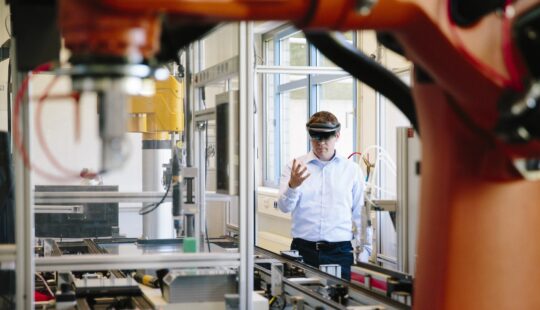What’s News
Tucked inside The Inflation Reduction Act of 2022 — a $700 billion climate relief bill awaiting President Biden’s signature — is $80 billion designed to help the IRS to go after higher income earners and companies who avoid paying their share of taxes. While the price tag may sound staggering, the agency has been woefully underfunded for decades and needs to catch up to achieve its goal.
SAP’s Take
But hiring thousands will not solve the problem on its own. Challenging the strong and powerful requires specialized knowledge and experience that new hires don’t yet have. To address this, technology can help spread institutional knowledge across the IRS to help find those who are shirking their share.
“Somehow you’ve got to get that knowledge from a few to thousands of people,” said Greg Owens, SAP public sector solutions manager. “That’s where advanced technologies help. If you can take that knowledge that’s in a small number of heads and build it into a solution, you let the data tell the stories and then augment that with what the humans know. It’s basically making a hybrid of human and machine understanding.”
Technology also can help find the “sweet spot” of earners and companies for the IRS to target — those who are rich, but not rich enough to hire an army of lawyers and tie up the agency in court for years.
“That’s where machine intelligence or machine learning algorithms can help the detection,” said Ian Ryan, global head of the SAP Institute for Digital Government.
Owens and Ryan have helped the Queensland Revenue Office in Australia collect about AU$16 billion of land, mining royalties, transfer, mortgage and other taxes using just 300 workers. The office adopted advanced technologies such as business integrity screening, which detects anomalies across huge datasets. The office also decided upon tax insights, a technology that uses machine learning to predict debt outcomes.
“They can effectively predict who is likely or unlikely to pay their tax bill next year,” Owens said. “They can use that as a focus tool to target their limited personal efforts toward improving cash flow and revenue stream.”
Before adopting a big, sophisticated system, Owens suggests that agencies should start small, “learn the ropes” and perfect that system before allocating it to the entire operation.
The Queensland Revenue Office started with five years of data, or 180 million facts, not the 10 to 12 years of data it would eventually employ. The first run of predictions were about 70% accurate, but within a couple of years of running the machine learning models, that rose to 80%, better than a human can predict.
“The technology can handle vast volumes of data. That’s not the problem,” Owens said. “The problem is getting humans to understand what we can do.”
Technology can also help detect fraud by profiling the likely income of a person or entity. This can be done by layering on outside data, such as comparable businesses, location, and previous years’ taxes. The anomaly can be a red flag signaling a need for further investigation. It doesn’t prove someone is a tax cheat.
“What they have is a prediction or detection of an anomaly that focuses their attention,” Owens said. “If you’re fishing in a pond full of trout, it’s a lot easier to catch a trout than just popping down to the ocean to see what you can find.”
Contact:
Ilaina Jonas, Senior Director of Global Public Relations, SAP
+1 (646) 923-2834, ilaina.jonas@sap.com



